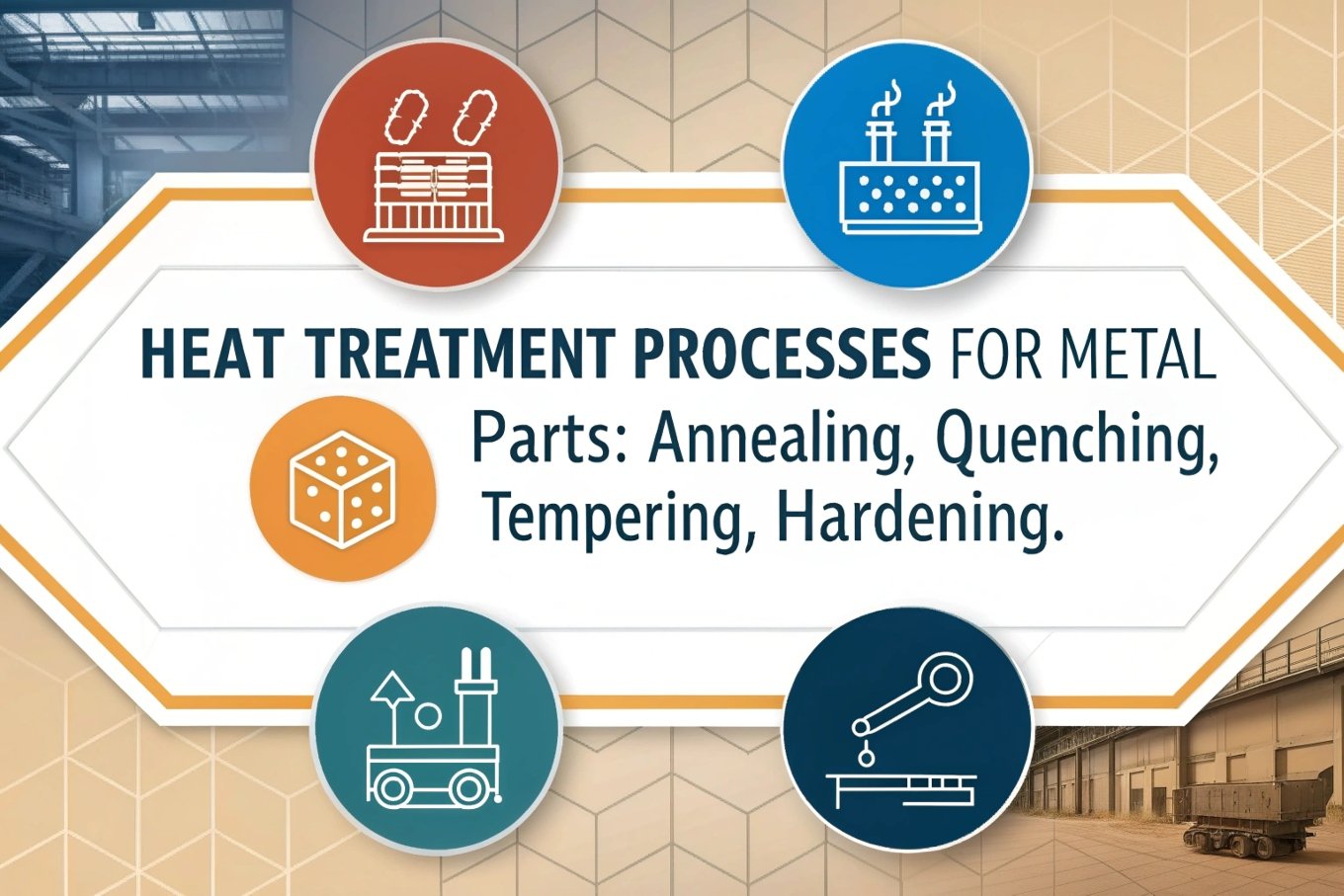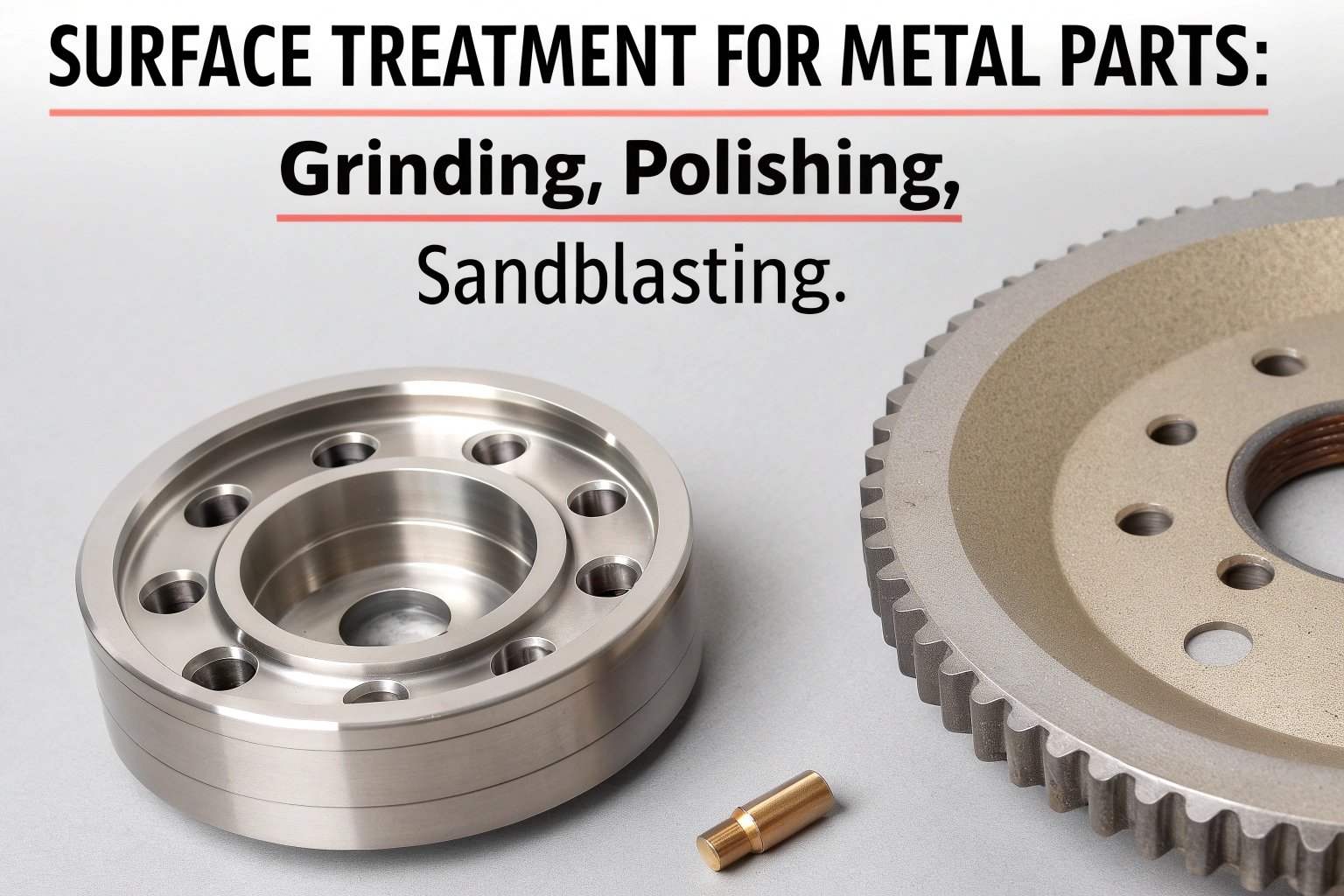
As businesses look to Vietnam for manufacturing opportunities, one crucial question arises: Can the country support specialized processes like heat treatment, electroplating, and surface treatment reliably and on time? Having worked closely with clients in the mechanical parts industry, I can attest that these services are not only available but are also growing in availability and quality. However, there are certain challenges that companies must navigate.
Vietnam offers heat treatment, electroplating, and surface treatment services, but the availability and stability of these services can vary by region. It is essential for companies to choose the right suppliers with established processes and facilities.
Let’s explore the availability and reliability of these key services in Vietnam and how businesses can ensure they get timely and stable results.
What is heat treatment for metal parts?
Heat treatment is a controlled process used to alter the physical and mechanical properties of metal parts. This process involves heating and cooling the metal to achieve desired characteristics such as hardness, strength, and resistance to wear.
Heat treatment is essential for enhancing the performance of metal parts1, particularly in industries like automotive, aerospace, and machinery. In Vietnam, heat treatment2 services are becoming more reliable, but capacity and expertise can vary.

Key Heat Treatment Processes
| Process Type | Description |
|---|---|
| Annealing | Softening metal to improve ductility |
| Quenching | Rapid cooling to harden metal |
| Tempering | Reducing brittleness after hardening |
| Hardening | Increasing hardness through high temperature |
Availability of Heat Treatment in Vietnam
Heat treatment services in Vietnam are generally available, but there are a few challenges to consider:
- Specialized Equipment – Some processes, like high-temperature heat treatment, require advanced machinery, which may not be widespread in all regions.
- Consistency – The quality of heat treatment can vary depending on the supplier’s experience and the complexity of the metal part.
- Regional Differences – Major industrial hubs like Ho Chi Minh City and Hanoi tend to have more advanced facilities compared to rural areas.
In general, businesses should verify the technical capabilities and equipment of their heat treatment providers to ensure timely and stable results.
What is electroplating treatment3 for metal parts?
Electroplating is a process in which a metal coating is applied to a workpiece using an electric current. The coating can enhance the part’s appearance, durability, and resistance to corrosion. Electroplating is commonly used for decorative purposes, as well as to improve wear resistance in high-performance applications.
Electroplating is available in Vietnam, with many suppliers offering competitive pricing. However, the quality of service can be inconsistent, and finding a supplier with the necessary technology and experience is crucial.

Common Electroplating Materials
| Material | Typical Use |
|---|---|
| Gold | Decorative, electrical conductivity |
| Nickel | Corrosion resistance, wear resistance |
| Chromium | Hardness, aesthetic finish |
| Zinc | Corrosion protection, cost-effective coating |
Challenges in Electroplating in Vietnam
- Environmental Regulations4 – Electroplating processes involve chemicals that can be harmful if not handled properly. The Vietnamese government has been tightening regulations on waste disposal and environmental impact, which can cause delays.
- Technology Limitations5 – While some facilities in Vietnam offer high-quality electroplating, others may not have the latest technology, affecting plating consistency and durability.
- Turnaround Time – Depending on the complexity and volume of the electroplating process, it can take time. A lack of local suppliers with sufficient capacity could lead to longer lead times.
Ensuring Timely Electroplating Services
- Supplier Audits – Work with suppliers who maintain modern electroplating technology and ensure compliance with environmental regulations.
- Short-Term Testing – Order small batches to verify the quality and turnaround time before committing to larger orders.
With careful selection, businesses can benefit from reliable electroplating services in Vietnam.
What is surface treatment and surface coating for metal parts?
Surface treatment and surface coating6 are processes that enhance the outer surface of metal parts. These treatments aim to improve qualities like corrosion resistance, wear resistance, and overall durability. Surface treatment includes processes like grinding, polishing, and blasting, while surface coating includes applying layers of paint, varnish, or other protective materials.
Surface treatments and coatings are widely available in Vietnam, though quality and consistency can vary depending on the provider’s expertise and equipment. Companies need to assess these factors to ensure stable results.

Common Surface Treatment Methods
| Method | Purpose |
|---|---|
| Sandblasting | Cleaning and smoothing the surface |
| Polishing | Improving surface smoothness and appearance |
| Grinding | Removing excess material to achieve precise dimensions |
Common Surface Coatings
| Coating Type | Purpose |
|---|---|
| Powder Coating | Durable, corrosion-resistant finish |
| Anodizing | Protective oxide layer for aluminum parts |
| Paint Coatings | Aesthetic and protective finish |
Availability and Challenges in Surface Treatment
- Wide Availability – Surface treatment services like polishing and coating are available in most industrial centers in Vietnam.
- Inconsistent Quality – The technology and expertise for high-end coatings (like powder coating or anodizing) may be limited outside of major cities.
- Long Lead Times – For complex treatments or large volumes, businesses may experience delays, especially if local suppliers do not have the capacity to handle high demand.
Overcoming Challenges
- Pre-Order Samples – Always test samples before placing large orders to ensure the surface quality meets expectations.
- Use Local Experts – Partnering with suppliers who specialize in surface treatment can help ensure consistent quality and faster turnaround.
Conclusion
Heat treatment, electroplating, and surface treatment services are available in Vietnam, with many suppliers offering high-quality processes. However, there are challenges related to consistency, equipment, and capacity, particularly in smaller regions. By carefully selecting suppliers and conducting regular audits, businesses can access reliable and timely supporting services to meet their manufacturing needs.
Discovering treatment methods for metal parts can significantly impact their functionality and lifespan in various industries. ↩
Understanding heat treatment is crucial for industries relying on metal parts, enhancing performance and durability. ↩
Exploring electroplating can reveal how it improves metal durability and aesthetics, essential for various applications. ↩
Understanding these regulations is crucial for compliance and avoiding delays in electroplating processes. ↩
Exploring this topic can help businesses identify reliable suppliers with modern technology for better plating quality. ↩
This knowledge is essential for selecting the right process to enhance metal durability and performance. ↩

